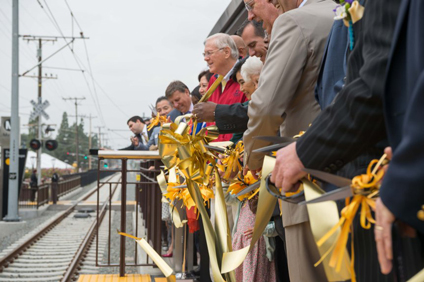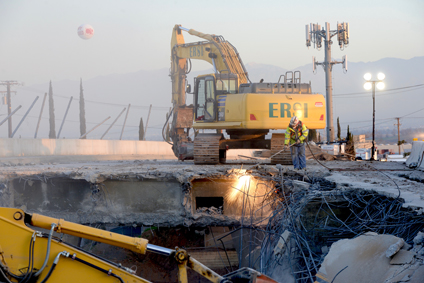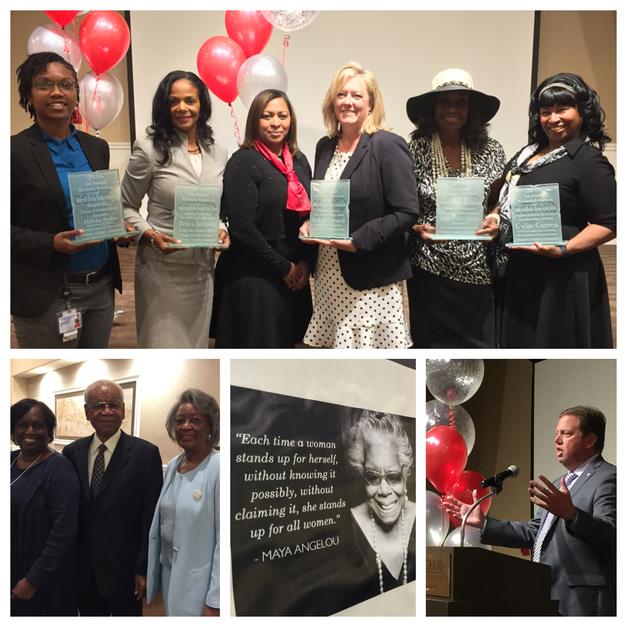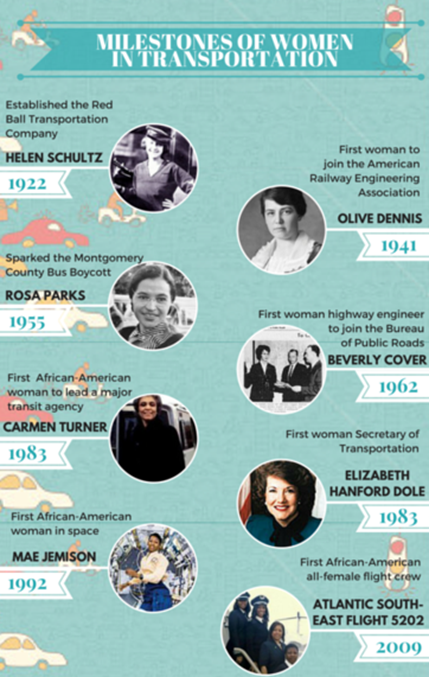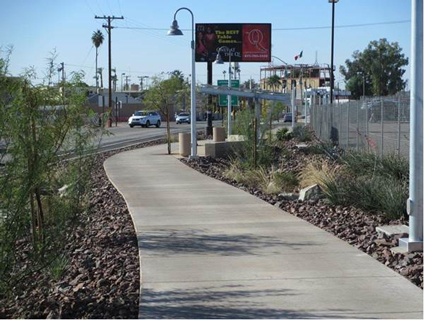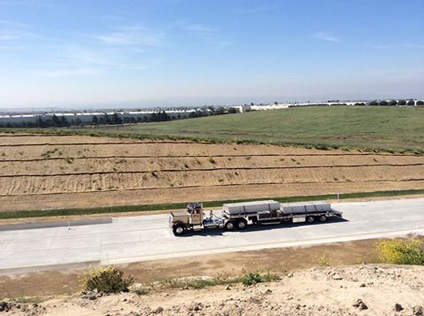Summit Sponsorships Selling Quickly!
Sponsorships are selling quickly for the 15th Annual Southern California Transportation Summit on Friday, Oct. 21 at the Disneyland Hotel.
 Available sponsorships include:
Available sponsorships include:
- Platinum Sponsorships – $10,000
- Closing Session (1 left)
- VIP Reception (2 left)
- Gold Sponsorships – $5,000
- Breakout Session (5 left)
- Travel Bag Organizer (1 left)
- Silver Sponsorships – $4,000
- Hospitality Suite (2 available)
- Breakfast Buffet (1 available)
- Afternoon Networking Break (1 available)
- Centerpieces (1 available)
- Copper Sponsorships – $2,500
- Bronze Sponsorships – $1,000 (open to registered small businesses and nonprofits only)
Click here to view more information about the sponsorship packages or contact Kristin Slocum to sign up.
Mobility 21 Advisory Board Member Spotlight:
Kerry Cartwright
Director of Goods Movement, Port of Los Angeles
 Kerry Cartwright has been the Director of Goods Movement at the Port of Los Angeles since 2007. Prior to joining the Port of LA, he was the Director of Transportation Planning at the Port of Long Beach for more than 10 years. His duties and responsibilities include: the planning and conceptual design of landside access improvements, regional transportation planning, funding and transportation policy.
Kerry Cartwright has been the Director of Goods Movement at the Port of Los Angeles since 2007. Prior to joining the Port of LA, he was the Director of Transportation Planning at the Port of Long Beach for more than 10 years. His duties and responsibilities include: the planning and conceptual design of landside access improvements, regional transportation planning, funding and transportation policy.
Kerry has 30 years of experience in traffic engineering and transportation planning, and is a registered Traffic Engineer in the State of California and a registered Professional Engineer in Canada. He serves on numerous regional, statewide and federal transportation/goods movement technical and policy committees. He currently is a member of the State of California’s Freight Advisory Committee and is on the board of directors for the “Coalition of America’s Gateways and Trade Corridors” (CAGTC).
Kerry received the Southern California Association of Governments’ “Regional Champion Award” for 2009. He is also an instructor for the Global Logistics Specialist® program at California State University, Long Beach. Kerry obtained a B.Sc. in Civil Engineering from the University of Alberta, Canada.
Mobility 21 Advisory Board Member Spotlight:
Brad Kuhn
Partner, Nossaman LLP
 Brad Kuhn is a partner at the law firm Nossaman LLP, where he serves as the Chair of the firm’s Eminent Domain and Valuation Practice Group. Brad is widely known as a leader in the field of right-of-way acquisitions for California’s most critical infrastructure projects, with a unique ability to advise public agencies on creatively resolving complex land acquisition and valuation disputes. His early involvement ensures that projects are delivered on schedule and under budget, and he routinely saves his clients tens of millions of dollars through thoughtful property acquisition delivery and right-of-way planning.
Brad Kuhn is a partner at the law firm Nossaman LLP, where he serves as the Chair of the firm’s Eminent Domain and Valuation Practice Group. Brad is widely known as a leader in the field of right-of-way acquisitions for California’s most critical infrastructure projects, with a unique ability to advise public agencies on creatively resolving complex land acquisition and valuation disputes. His early involvement ensures that projects are delivered on schedule and under budget, and he routinely saves his clients tens of millions of dollars through thoughtful property acquisition delivery and right-of-way planning.
Brad is actively involved in California’s transportation industry. In addition to serving on the Advisory Board for Mobility 21, he also serves as President of the Riverside/San Bernardino Chapter of the International Right of Way Association (IRWA), the United States’ premier organization for right of way acquisition. Brad was also recently selected to serve as General Counsel for the IRWA, overseeing its 10,000+ member, world-wide organization. He also participates on the Eminent Domain & Land Use Committee for the Transportation Research Board.
Some of the projects Brad has led include the Los Angeles County Metropolitan Transportation Authority’s Purple Line Westside Subway Extension Project and LAX/Crenshaw Transit Corridor Project, the Exposition Light Rail Transit Project, SANDAG’s Mid-Coast Corridor Transit Project and SANBAG’s sbX E-Street Corridor Bus Rapid Transit Project and Downtown Passenger Rail Project. He has also overseen numerous other transportation and utility transmission projects.
Brad’s accomplishments have been profiled in numerous publications, including being named to the Daily Journal’s Top 20 Under 40 list, a recognition given to the top 20 lawyers in California that are on the cutting edge of legal issues, and who are making an impact on changing an industry, region or society, and being chosen for individual recognition by Chambers & Partners, the guide to the world’s best lawyers. He earned his undergraduate degree from the University of Southern California, and his juris doctorate from Chapman University School of Law. He lives in San Clemente with his wife Nicole, and their two sons, Preston (5) and Jack (3).
Metro Joins Elected Officials in Celebrating Opening of
New 11.5-Mile Metro Gold Line Extension Project
This month the Los Angeles County Metropolitan Transportation Authority (Metro) joined with local, state and federal officials in the San Gabriel Valley to proudly celebrate the grand opening of the new Metro Gold Line Extension Project, the first Measure R sales tax-funded rail line to open to the public.
“The Gold Line Extension is the opening salvo in L.A. County’s transit revolution,” said Mark Ridley-Thomas, L.A. County Supervisor and Metro Board Chair. “Metro is making good on its commitment to ease traffic and fulfilling the will of voters throughout the region by building a plethora of new transit services that will make it easier to get around in virtually every corner of our great county.”
The 11.5-mile light rail line extends the existing Metro Gold Line from Pasadena to Azusa, making brand new station stops in Arcadia, Monrovia, Duarte/City of Hope, Irwindale, Azusa Downtown and APU/Citrus College.
“Whether you live in the San Gabriel Valley or downtown L.A., easing congestion is a goal everyone in our region shares,” said Los Angeles Mayor and Metro Board Second Vice Chair Eric Garcetti. “The Gold Line Foothill Extension is the first Measure R rail project to enter service, and it embodies our dreams for the future of L.A. County — a place with a truly comprehensive transit system that gets us around faster, helps us breathe easier, and moves our economy forward.”
Weekend Full Closure of 91 Yields Results for Riverside County Transportation Commission’s 91 Project
 Completely close the 91 for a full weekend? Oh, yes, they did! Planning, interagency coordination and a supportive community allowed the Riverside County Transportation Commission’s (RCTC) 91 Project team to successfully close both eastbound and westbound 91 in Corona, the weekend of Feb. 19-22.
Completely close the 91 for a full weekend? Oh, yes, they did! Planning, interagency coordination and a supportive community allowed the Riverside County Transportation Commission’s (RCTC) 91 Project team to successfully close both eastbound and westbound 91 in Corona, the weekend of Feb. 19-22.
The 55-hour full closure of the 91 between the 71 and I-15 cleared the roadway, allowing crews to consolidate three major work efforts, efficiently and safely.
“Combining the work activities within one weekend reduced the number of closure hours by more than 50 percent,” said RCTC Executive Director Anne Mayer. “The project’s design-build method allows for flexibility in planning work, such as this major effort.”
For weeks prior to the closure, the project team implemented a robust “91 Steer Clear” public outreach and news media campaign, which urged motorists to plan ahead, avoid the area or stay home. Detour routes were suggested, and RCTC warned drivers that they could face delays of three to four hours if they chose to travel on routes closest to the closure area.
Once the roadway was cleared after 9 p.m. on Feb. 19, crews tackled three complex operations:
- Demolition of the west half of the Maple Street Bridge, removing and hauling away close to 2,200 tons of concrete.
- Construction of the support structure for the new westbound Maple Street on-ramp flyover bridge, including placement of 48 steel “Super Beams,” each weighing 22 tons and measuring 120 feet by 3 feet. Workers also placed smaller beams and built the wooden soffit for the structure.
- Paving of the eastern end of the project near I-15, which required placement of embankment material, an aggregate subbase, asphalt concrete and concrete pavement.
To view a time-lapse video of the weekend work, go to the “91 Steer Clear” webpage on the project website, http://www.sr91project.info.
The effort placed approximately 200 workers on site during the weekend, all focused on completing the operations in time to reopen the roadway by Monday, Feb. 22 at 4 a.m. Crews opened the westbound lanes by 1:30 a.m. and the eastbound lanes by 3:30 a.m. They also used the weekend closure to perform various maintenance activities, including pothole repair, lane restriping and trash pick-up within the project limits.
Because of the outreach efforts, which included billboards, changeable message signs, radio ads, social media posts and ads, four news conferences, heavy news coverage, email reminders, a public meeting with webcast, detour maps and presentations, motorists heeded the warnings and steered clear from the area. Metrolink operated extra trains and offered a “2 for the price of 1” promotion for weekend riders. Regularly scheduled trains passing through Corona carried 3,612 passengers, a 30 percent increase over the same weekend a year ago.
The project team also briefed business operators and encouraged Corona residents to patronize local businesses during the closure. The team held multiple planning meetings with emergency responders, the Orange County Transportation Authority, the Transportation Corridor Agencies, Caltrans, the counties of Riverside and Orange and cities throughout the region.
The City of Corona aided the effort by spreading the word to its residents, creating a list of 55 things to do during the 55-hour weekend closure, and hosting a social media “Staycation in Corona” contest. Throughout the weekend, the team posted website and social media updates and photos of the construction progress to engage the community.
Team members staffed Corona’s Traffic Management Center and worked closely with the Caltrans TMC to monitor traffic flow at the local and regional levels. Driving patrols also were assigned to the detour routes to track and report back their travel times. Extra Freeway Service Patrol vehicles also were on hand to quickly clear stranded motorists from the roads.
Construction of the 91 Project is about 60 percent complete, with significant work planned during the coming months. For more information, visit sr91project.info, send an email to sr91project@rctc.org, or use “sr91project” to connect via Facebook, Twitter or Instagram.
Pepper Avenue Interchange Offers Access and Opportunity
The San Bernardino Associated Governments (SANBAG), the County of San Bernardino, the City of Colton and the California Department of Transportation celebrated the start of construction for the much-anticipated Interstate 10/Pepper Avenue Interchange Improvement Project. This approximately $10 million dollar enhancement to the interchange will provide better circulation, enhanced response capabilities for emergency service providers and improved access to the Arrowhead Regional Medical Center.
In addition, the project boasts a first-of-its-kind federal pilot program for local and veteran hiring practices. The Federal Highway Administration and SANBAG have come together to incentivize the contractor to hire San Bernardino County residents and/or veterans who have been honorably discharged. This program is designed to create local jobs and help boost the economy through infrastructure investment. Funded through Measure I, the half-cent sales tax for transportation improvements in San Bernardino County, this effort may offer a new way of doing business on roadway improvement projects.
“This project is touching the lives of our friends and neighbors in a different way,” SANBAG President Ryan McEachron said. “I am extremely proud that our staff was aggressive in working the Federal Government to pilot a program that incentivizes hiring of locals and veterans.”
The work at this location represents the second phase of work to improve the operation of interchange. Phase one of the project, the realignment of Valley Boulevard just north of Interstate 10, was constructed in 2008. When Phase two is complete, the interchange will feature a five-lane bridge, improved ramps, extended turning lanes, and improved drainage. Construction for this phase begins in March 2016 and is expected to be complete in summer 2017. Funding for this phase of the project is a combination of local, state and federal funds.
6 SoCal Transportation Leaders Honored
During Women’s History Month Event
More than 130 Southern California people gathered to salute six leading transportation officials making a difference at the premier Women Leaders of Southern California Transportation Awards on March 22, 2016.
The special awards program at the Grand Long Beach Event also commemorated national Women’s History Month, according to Gwendolen Gray, president of the Southern California Regional Chapter of the Conference of Minority Transportation Officials (COMTO).
“We’re excited to honor extraordinary women leaders whose public service contributions have significantly impacted the surrounding communities and the transportation industry,” Gray said.
The inaugural awards were presented to the following individuals:
Distinguished Society Lifetime Achievement Award
Honorable Hilda Solis, Supervisor, 1st District,
Los Angeles County and L.A. Metro Board Chair
Distinguished Transportation Lifetime Achievement Award
Leilia Bailey-Leahy, Deputy General Manager of Operations
Excellence in Diversity & Inclusion Leadership Award
Gwiin Correa, Chief Equal Employment Opportunity
California Department of Transportation, District 7
Outstanding Transportation Executive Leadership Awards
Debra Johnson, Deputy Chief Executive Officer
Long Beach Transit
Beth McCormick, General Manager, Transit
Orange County Transportation Authority
Stephanie Wiggins, Deputy Chief Executive Officer
Los Angeles County Metropolitan Transportation Authority
During their remarks, award recipients credited their success to other women whose sacrifice and dedication paved the way for continued service and leadership excellence – even during turbulent and challenging times.
“No matter what your industry, no matter what your race, there are still challenges. But we as women, we bring as much to the table as anyone else,” said Bailey-Leahy, a pioneer in the transit industry when she became the first female post-World War II bus driver. “I know that breaking into any industry that had been almost completely male-orientated is a very, very difficult task.”
During her acceptance speech, Correa took an opportunity to told a story about the care and consideration that First Lady Michelle Obama received when she met Nancy Reagan who shared helpful woman-to-woman advice. It’s that reliance on counsel from other women that has helped Correa succeed.
In a state rich with diversity, Correa understands the importance of inclusion and cultural awareness. She recognizes “the need for action that must be taken in order to ensure a more welcoming environment within the transportation industry and neighboring communities.”
Correa works with a small team to plan events and execute programs that introduce different cultures to each other, empowering them to embrace and celebrate their differences.
“It’s all about the people. It’s about our employees, but it’s also about the public,” said the Caltrans executive with more than 20 years of equal rights, training and public speaking experience.
Standing on the shoulders of great women who spearheaded equal-opportunity changes in transportation before her, Correa is also leaving her mark.
“We are ordinary people, but we’re doing some phenomenal things at Caltrans to make changes in terms of equal opportunity and civil rights,” Correa said.
During her acceptance speech, Correa took an opportunity to told a story about the care and consideration that First Lady Michelle Obama received when she met Nancy Reagan who shared helpful woman-to-woman advice. It’s that reliance on counsel from other women that has helped Correa succeed.
In a state rich with diversity, Correa understands the importance of inclusion and cultural awareness. She recognizes “the need for action that must be taken in order to ensure a more welcoming environment within the transportation industry and neighboring communities.”
Correa works with a small team to plan events and execute programs that introduce different cultures to each other, empowering them to embrace and celebrate their differences.
“It’s all about the people. It’s about our employees, but it’s also about the public,” said the Caltrans executive with more than 20 years of equal rights, training and public speaking experience.
Standing on the shoulders of great women who spearheaded equal-opportunity changes in transportation before her, Correa is also leaving her mark.
“We are ordinary people, but we’re doing some phenomenal things at Caltrans to make changes in terms of equal opportunity and civil rights,” Correa said.
During her acceptance speech, McCormick also shared her gratitude of the mentoring she received that led to her participation in COMTO.
As a way to give back, McCormick is highly focused on mentoring young people and mentoring women in the transportation industry.
“We mentor a lot of people, and I love that part of my job. It’s really the most fun … but you can’t do it alone,” said McCormick, whose wealth of experience spans from her 30 loyal years in the transportation industry from helping to start the Metrolink service in Orange County to the development of a paratransit program. “Mentoring gives you an opportunity to have that one-on-one time with people who are exactly where you were 30 years ago.”
During the event, a table of women transportation veterans from L.A. Metro recognized younger professionals seated at an adjacent table and vowed to continue to provide mentorship to help emerging professionals assume future leadership positions.
Gray hopes that the new awards program will sow the seeds for future generations of transportation leaders to come.
“The overriding factor of this year’s awardees is a demonstrated commitment to advancing and strengthening our nation’s transportation infrastructure across their diverse areas of influence and affiliations,” said Gwendolen Gray, COMTO Southern California Regional President. “We are proud to host an event recognizing these amazing women, and we are thankful for all they’ve done and all they continue to do.”
With over 1,700 members, COMTO’s mission is to ensure a level playing field for minority individuals and business on the transportation industry through advocacy and information sharing.
“The inspiring afternoon highlighted the work, dedication and passion of these six incredible individuals along with all individuals who are improving transportation today for generations to come,” Gray concluded. “We are grateful for these leaders, sponsors and volunteers for making the inaugural awards event a resounding success that touched all of us and inspired us to strive to be better and pave the way for future generations of leaders.”
Learn About Metro’s Plan to Ease Traffic
This month the Metro Board of Directors approved the release of Metro’s Draft Expenditure Plan (The Plan) for public input. The Plan outlines how Metro will plan, build, operate and fund LA’s growing transportation system over the next 40 years to accommodate the additional 2.4 million people and 1.4 million new jobs that are projected for Los Angeles County over the same period.
The foundation of the Plan consists of 36 major highway and transit projects as well as projects designed to improve and enhance mobility and system connectivity; promote bicycling and walking; support Americans with Disabilities Act (ADA)/Paratransit services for the disabled; discounts for students and seniors; investments to fund bus and rail operations; ongoing system maintenance and repair, including repair of bridges and tunnels; and funds for repair and enhancement of local streets and roads.
To fund the Plan, Metro is considering a ballot measure for a new half-cent sales tax and extension of the horizon year for the existing half-cent Measure R sales tax. If approved, these could generate an estimated $120 billion to pay for the transportation projects and programs over the 40-year horizon of the Plan.
Please go to Metro’s website to learn about the Plan, including opportunities for you to share your thoughts through any of the following:
- Use the online comment form on the website
- Send an email to theplan@metro.net
- Attend one of Metro’s community meetings that will be held around LA County in April
- Participate in Metro’s online “virtual” community meeting
- Participate in one of Metro’s telephone town halls to be held in May
- Share your thoughts on Facebook or Twitter using #MetroPlan
In June 2016, Metro will provide the Metro Board of Directors with an updated recommendation including a full report on the public input that has been received. The Board will decide on the details of The Plan including whether to place a measure on the upcoming November ballot.
Imperial County Transportation Commission
Awarded for Pedestrian Crossing Project
Caltrans presented the Excellence in Transportation Award to the Imperial County Transportation Commission (ICTC) on Feb. 24 for the Andrade Port of Entry (POE) – Quechan Crossing Transportation Enhancement Project. The Project completed pedestrian access and landscaping improvements along State Route 186 (SR-186) at the Andrade/Algodones Port of Entry.
The Andrade Port of Entry (POE) is located on SR-186 in Imperial Valley on the Quechan Indian Reservation and is one of California’s busiest crossings for pedestrians entering into Mexico. The U.S. Customs and Border Protection processed over one million pedestrians in 2014, and in the peak season (late September through April) approximately 5,000 pedestrians cross the border every day. Before the project, the Americans with Disabilities Act (ADA) standards were not met and walkways were inadequate to accommodate wheelchairs and walkers. While deficient by any standards, this was especially problematic in an area where a large proportion of the users are either elderly or disabled. Many of the pedestrian users come from eastern Imperial County in Winterhaven, Calif. and the City of Yuma, Ariz.
The project has improved the accessibility, character and visual quality of the area with enhancements and design themes reflecting the regional character of the Quechan Indian Tribe and capturing historical context of this very unique area. The Andrade POE project was a collaborative effort by Caltrans and ICTC with the Quechan Tribe, the U.S. Customs and Border Protection and the U.S. Department of General Services Administration. It is a successful project that provides a more effective, safe and pleasant travel experience for all modes of transportation, with an emphasis on pedestrian circulation.
New Border Freeway in San Diego Opens to Traffic
Segment 1 of State Route 11 – a new four-lane highway in Otay Mesa – opened to traffic this month, helping to facilitate crossborder commerce and ease congestion along the San Diego-Tijuana border.
The 1.7 mile segment, including connectors to SR-905, extends east from SR 905 to Enrico Fermi Drive. This new facility provides trucks departing the Otay Mesa Port of Entry direct access to the state highway system. The SR-11 segment also connects cross border trucking and industrial facilities on the eastern end of Otay Mesa directly to the highway system. To date, trucks have relied heavily on local roads, such as La Media Road and Airway Road, to get around.
Segment 1 of SR-11 is part of a larger project to build a new port of entry (POE) connecting San Diego and Tijuana. Future phases will extend the highway about one mile to the border and create a new state-of-the-art POE that will provide fast, predictable, and secure crossings. The goal is to operate the future Otay Mesa East/Mesa de Otay II POE with a 20-minute border wait time.
Caltrans and SANDAG are spearheading the development of both the Otay Mesa East project and the border roadway network. In addition to SR 11, the two agencies are working to build three freeway-to-freeway connectors linking SR 905 and SR 11 with northbound SR 125. Construction on the connectors started in November 2015 and is expected to be complete by the end of 2016.
“Building 21st century border infrastructure is incredibly important to the economic vitality of our region and the entire state of California,” said Supervisor Ron Roberts who chairs the SANDAG Board. “Mexico is California’s number one export market, and it’s the United States’ third largest trading partner after Canada and China. We are committed to building world-class infrastructure to nurture and sustain binational trade and support job growth.”
The SR 11/Otay Mesa East Port of Entry project is the result of collaboration by a number of key local, state, and federal agencies in both the United States and Mexico, including the General Services Administration, U.S. Customs and Border Protection, the U.S. Department of Transportation, the Federal Highway Administration, Mexico’s Secretaría de Comunicaciones y Transportes, Secretaría de Relaciones Exteriores, and Mexican Customs/Aduanas.
“This is the first of three segments that will eventually lead to an additional port of entry in the San Diego region. In the interim, motorists and commercial vehicles will be able to use this newly completed highway section to gain easier access to the region’s highway system,” said Caltrans District Director Laurie Berman. “This partially completed project will reduce traffic and congestion on local streets, getting travelers to their destination.”
Currently, all border crossings between the San Diego area and Tijuana are congested, with border wait times routinely exceeding two hours. Border traffic congestion and delays cost the U.S. and Mexican economies an estimated $7.2 billion in gross output (value of goods and services produced) and more than 62,000 jobs, according to a 2007 study conducted by SANDAG. In addition to economic loss, border congestion is also detrimental to air quality.
The first segment cost $103.4 million, including right-of-way acquisition. Funding sources include: $71.6 million from the Prop. 1B Trade Corridor Improvement Fund (TCIF) and $31.8 million from the federal Coordinated Border Infrastructure Program (CBI). The northbound connectors project is estimated to cost $21.4 million, with $16.1 million from Prop.1B, $2.7 million from CBI, and $2.6 million from the regional TransNet half-cent sales tax for transportation.
Segment Two of the SR 11/Otay Mesa East Project will extend SR 11 from Enrico Fermi Drive east to the new Otay Mesa East Port of Entry just after Siempre Viva Road and includes a new Commercial Vehicle Enforcement Facility (CVEF). The entire length of the highway will be two miles. Segment Three will build the new Otay Mesa East Port of Entry. The last two phases will be built as funding becomes available.
When SR 11 is completed, it will operate as a tolled facility, providing travelers the opportunity to pay a fee to get to the border more quickly, drastically reducing the lengthy waits they currently endure.
Registration Now Open for SCAG Regional Conference & General Assembly
The Southern California Association of Governments (SCAG) invites you to the 51st annual Regional Conference and General Assembly, May 5-6, 2016 at the La Quinta Resort & Club in La Quinta. This year’s event theme, “Power of the Past, Force of the Future,” builds upon the development of the 2016 Regional Transportation Plan/Sustainable Communities Strategy (2016 RTP/SCS) as well as last year’s celebration of the agency’s 50-year anniversary. This exciting and dynamic event brings together state and local elected officials, CEOs, business and civic leaders, transportation and environmental stakeholders, local government staff and others.
Register now and secure a special early bird registration rate of $250, available only until April 1. Take advantage of the discount while it lasts!
Transportation Events in the Community
April 4-5
Los Angeles Sustainability Coalition: 2016 LASC Next Generation Workshop, Tour + Reception
More info | Register
Thursday, April 7
WTS-SD: Student Scholarship Bowling Fundraiser
More info | Register
April 14-16
Canstruction LA 2016
More info
Thursday, April 14
CMAA SoCal: Emerging Leaders & Future Construction Managers Soft Skills and Networking Event
More info | Register
Friday, April 15
WTS-SD: Members-Only: Negotiation Skills Workshop
More info | Register
Thursday, April 21
Contra Costa Transportation Authority: Redefining Mobility Summit
More info | Register
Thursday, April 21
CMAA SoCal: Annual Awards Gala
More info | Register
April 26-28
LA Chamber: Access DC
More info | Register
Thursday, April 28
IEEP, LA Chamber and Drucker School: Logistics Summit
More info | Register
Thursday, April 28
WTS-SD: Are Our Roads and Rails at Risk?
More info | Register
Tuesday, May 3
LA Chamber: 90th Annual World Trade Week Kickoff Breakfast
More info | Register
May 5-6
SCAG: Regional Conference & General Assembly
More info | Register
Thursday, May 19
CMAA So Cal: Alternative Project Delivery Systems
More info | Register
Friday, May 20
ACEC Riverside-San Bernardino: Golf Tournament
More info
May 23-25
OCBC: DC Advocacy Trip
More info | Register
Wednesday, May 25
CTF: 27th Annual Transportation Awards
More info | Register | Nominate
Thursday, June 16
SANBAG: General Assembly
More info | Sponsor
Thursday, June 23
FuturePorts: Strong Ports=Strong California Conference
More info | Register
Thursday, June 23
ACEC-OC: Annual Awards Banquet
More info | Register
Thursday, July 28
California Construction Expo 2016
More info | Register
Friday, Sept. 16
ACEC-OC: 2016 Scholarship Golf Tournament
Sponsor
Friday, Oct. 21
2016 Mobility 21 Summit, Disneyland Hotel
More info | Sponsor
Dec. 4-6
Self-Help Counties Coalition: Focus on the Future, Hollywood
More info


